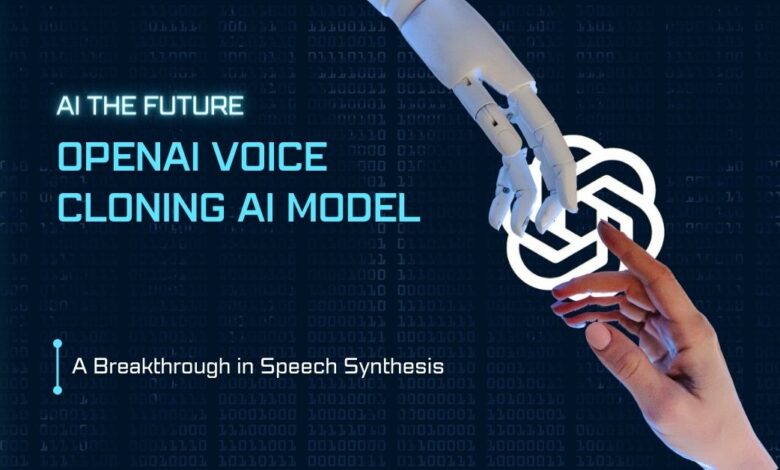OpenAI Voice Cloning AI Model: A Breakthrough in Speech Synthesis

Table of Contents
Introduction
OpenAI Voice Cloning AI Model has been introduced by a new OpenAI model. It copies someone’s voice with just a 15-second sample. This is a big deal for lots of different industries, like schools and shows. Let’s find out more about this cool progress.
How Does OpenAI Voice Cloning AI Model Work?
OpenAI’s Voice Engine leverages a combination of deep learning techniques and neural networks. Here’s how it operates:
- Voice Sample Collection:
- The process begins with capturing a short 15-second audio clip of an individual’s voice.
- This sample serves as the foundation for creating a synthetic voice.
- Voice Synthesis:
- The AI model analyzes the voice sample, extracting unique vocal characteristics, intonation, and accent.
- It then generates a synthetic voice that closely mimics the original speaker.
- Text-to-Voice Conversion:
- Voice Engine can read out text prompts on command.
- The synthesized voice matches the language and accent of the speaker or can be adapted to other languages.
Applications and Use Cases
OpenAI’s Voice Engine has already found applications in several domains:
- Education Technology:
- Age of Learning, an edtech company, uses Voice Engine to generate pre-scripted voice-over content for educational materials.
- Students receive real-time, personalized responses read aloud by the AI-generated voice.
- Visual Storytelling Platforms:
- HeyGen, a visual storytelling platform, incorporates Voice Engine to enhance user experiences.
- Imagine animated characters speaking with unique voices generated from a brief voice snippet.
- Healthcare and Accessibility:
- Dimagi and Lifespan, health software providers, utilize Voice Engine to assist individuals with vocal disabilities or illnesses.
- Clear speech restoration becomes feasible, benefiting patients and caregivers.
- Multilingual Applications:
- Voice Engine can seamlessly transfer accents across languages during translation.
- Imagine a French speaker’s voice reading English text with a French accent.
Ethical Considerations
While this technology is revolutionary, ethical guidelines are crucial:
- Consent: Voice Engine should not be used to impersonate people or organizations without their consent.
- Limited Access: OpenAI restricts access to about 10 developers to prevent misuse.
Conclusion
OpenAI Voice Cloning AI Model Engine represents a leap forward in voice synthesis. As it continues to evolve, we can expect even more innovative applications and a richer auditory landscape in the digital realm. The days of robotic text-to-speech are numbered—natural-sounding AI voices are here to stay!
You Might Also Like To Read
WhatsApp Bottom Navbar Feature Upgraded Officially in the Latest Update.
FAQ’s
What is OpenAI Voice Cloning AI Model?
OpenAI’s Voice Cloning AI Model is an artificial intelligence system capable of accurately mimicking and cloning a person’s voice using only a 15-second sample.
How does OpenAI Voice Cloning AI Model work?
The model uses advanced deep learning algorithms to analyze and replicate the subtle nuances of a person’s voice, capturing the unique characteristics that make it distinct.




